How do you prepare for and mentally adjust for Latin America following the USA. By taking a long-haul flight where the crew were indifferent, the food was horrible, the lounges only offered weak, luke-warm coffee and the in-flight entertainment was broken – then everything else shall be perfect by comparison!
Our arrival into Quito was true Latin American style – chaotic, noisy and confusing. First we had to pass a screening for Swine Flu. We found our taxi and made our way through a busy, noisy, dusty, dirty town and arrived at the hostel that, in style, is a marked difference from the lovely places we had been lodging in during our stay in the USA.
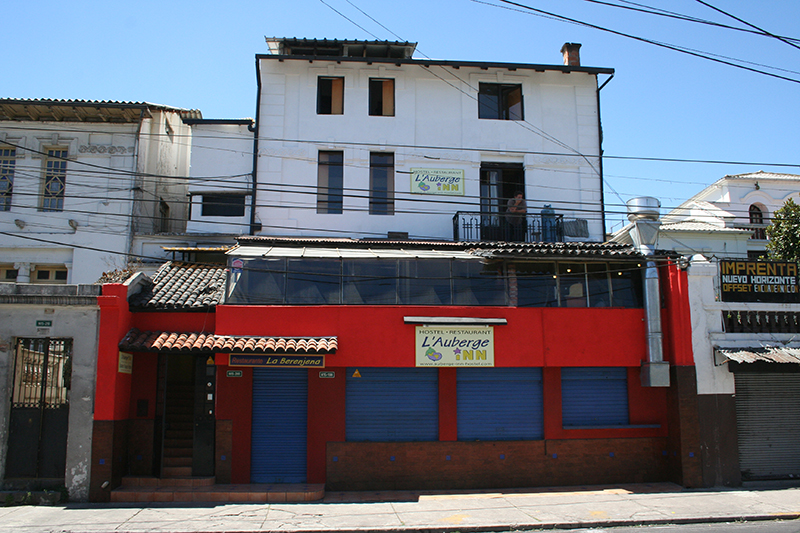 It’s a US$19.00 per night for the 2 of us. For this small price, we could stay here for 16 days compared to the cost of one night at Torrey Pines. Anyway, the room is quite clean; we get clean towels each day (that are thin enough to see right through) and a shower that has alternate cold and tepid water. This fine for an ex-public schoolboy like myself who is used to hard-arsed living but not so easy for a delicate flower like Debbie.
It’s a US$19.00 per night for the 2 of us. For this small price, we could stay here for 16 days compared to the cost of one night at Torrey Pines. Anyway, the room is quite clean; we get clean towels each day (that are thin enough to see right through) and a shower that has alternate cold and tepid water. This fine for an ex-public schoolboy like myself who is used to hard-arsed living but not so easy for a delicate flower like Debbie.
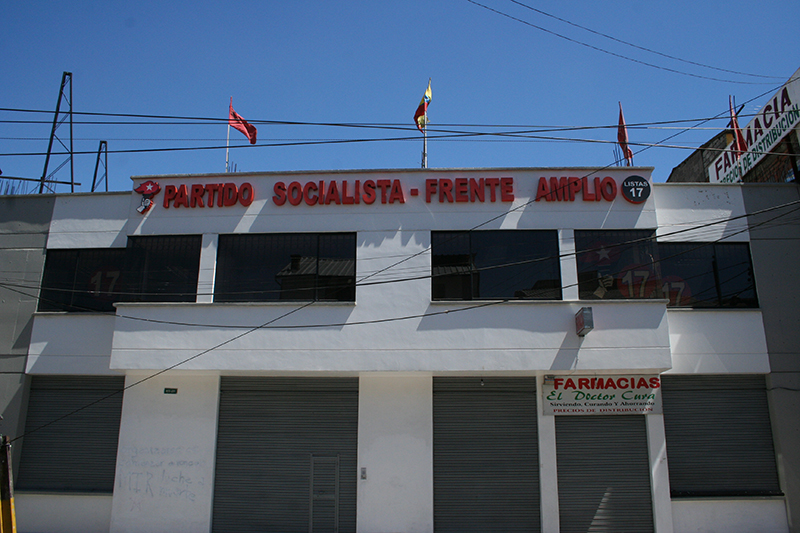 Opposite the hostal, there is a building that accommodates one of the political parties. Looking at its name – Partido Socialista Frente Amplio 17 – with the number 17 recurring around the outside of the building, I assumed it was a party for young revolutionaries and further thought that it was highly appropriate that the parties offices should be above a pharmacy. However, it turns out that the number 17 applies to a list of candidates from the party. Vota todo lista 17 is the message written around towns on houses, buildings and large stones.
Opposite the hostal, there is a building that accommodates one of the political parties. Looking at its name – Partido Socialista Frente Amplio 17 – with the number 17 recurring around the outside of the building, I assumed it was a party for young revolutionaries and further thought that it was highly appropriate that the parties offices should be above a pharmacy. However, it turns out that the number 17 applies to a list of candidates from the party. Vota todo lista 17 is the message written around towns on houses, buildings and large stones.
The following morning, having breakfasted on dried bread and jam, we ventured into the city. Quito is the second highest city in South America at around 9,000 feet above sea level (2,850m). It lies in a valley between two lines of Volcanoes, many still active, and regularly suffers from earthquakes, the last being 1972. The city runs north to south covering a distance of 70 km and is just 45km from the equator. Everything is quoted and priced in US$, there are no Ecuadorian bank notes but when you get change for $1 or less you receive Ecuadorian coins.
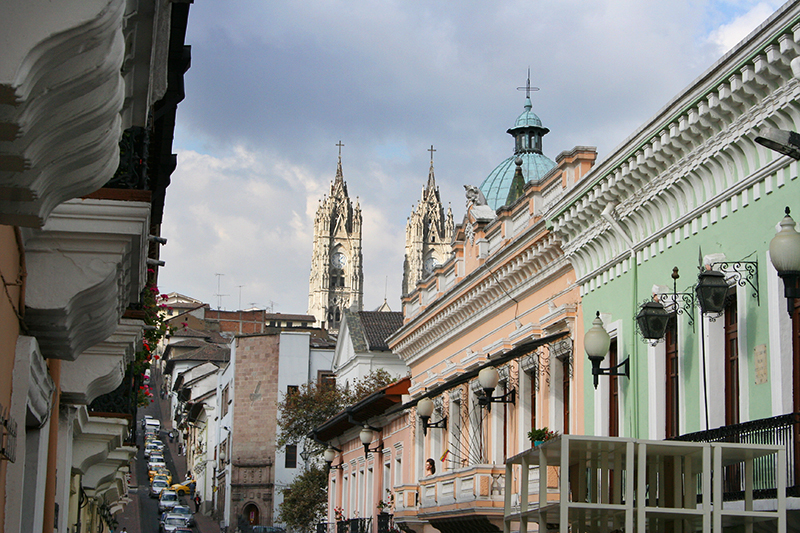 Its charm lies in its colonial past and the old city is full of narrow, cobbled streets, buildings full of character and poor people. The new city is full of wide roads, modern, tall buildings, banks and rich people. And there is dust everywhere, whipped up by the wind that is constant and, in the new city, the public buses belch out thick black exhaust fumes that encourage you to hold your breath until they have passed. This is plainly a very dirty trick because holding your breath is not to be recommended at this altitude. You end up panting like a rabid dog and get a lungful of black smoke anyway as the next bus grinds past.
Its charm lies in its colonial past and the old city is full of narrow, cobbled streets, buildings full of character and poor people. The new city is full of wide roads, modern, tall buildings, banks and rich people. And there is dust everywhere, whipped up by the wind that is constant and, in the new city, the public buses belch out thick black exhaust fumes that encourage you to hold your breath until they have passed. This is plainly a very dirty trick because holding your breath is not to be recommended at this altitude. You end up panting like a rabid dog and get a lungful of black smoke anyway as the next bus grinds past.
We walked to the end of the old city where there is a steep climb up to a statue of The Virgin of Quito 180m above the city. This was taxing on the lungs rather than the lags and we had to make 4 or 5 stops to allow our breathing to calm down before we made the top. As we regained our breath, I noticed a taxi rank next to the statue!
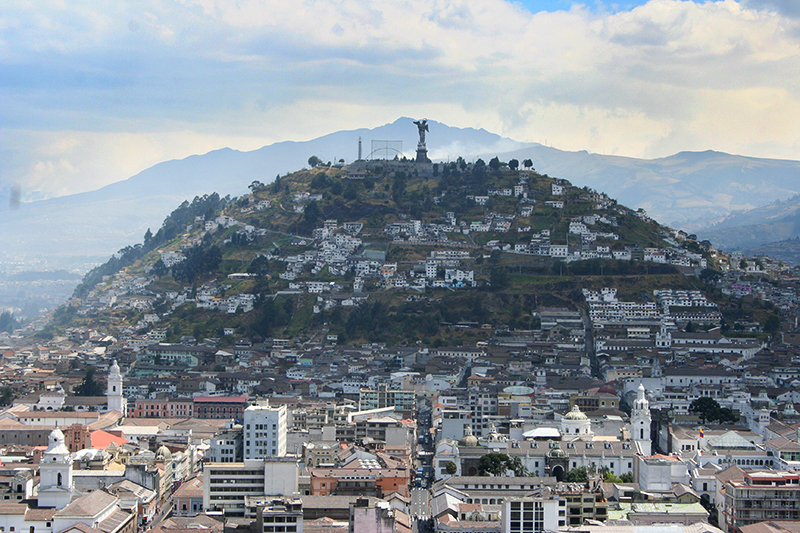 The views across the old city to the new city are very impressive. It’s not possible to see all 70km of the city but you can get a good feel of the size of the place. It’s a very windy city and, rather sadly, the views are often disguised by fires which occur throughout, and some alarmingly close to urbanisation. On our walk up to the statue there was evidence of fires all around the shanty town that was perched precariously on the hills.
The views across the old city to the new city are very impressive. It’s not possible to see all 70km of the city but you can get a good feel of the size of the place. It’s a very windy city and, rather sadly, the views are often disguised by fires which occur throughout, and some alarmingly close to urbanisation. On our walk up to the statue there was evidence of fires all around the shanty town that was perched precariously on the hills.
The city seems very safe during daytime, and we have walked a large area taking neither taxis nor buses. The only mishap we suffered was when some ‘pendecco’ (Spanish for wanker) sprayed paint on our backpacks. Little things please little minds I suppose. We have been advised not to be out after 2200 hrs, so we haven’t.
There are plentiful restaurants on every street. They are small, hole-in-the-wall type places that seat about 20 people. You can have the menu del dia (a 3 course set menu) for US$1.50 or you can splash out on something else for between US$2-$4 each. And the food is pretty good.
There were a couple of things we particularly wanted to do outside the city: visit the volcanoes, visit the Saturday market at Otavalo and stand on the line of the equator.
We first thought about taking buses (whatever they are) but discovered that, with no timetables and huge distances from the road to the mountains, this was not practical. So, we were off to hire a car. At nearly US$80 per day for a Huyundai diddly squat that could not go off road this was not practical either. We did the sensible thing and hired a guide, called Chasqui, with a 4×4 at the horrendous cost of US$130 per day! But being a professional, experienced climber, he turned out to be great value for money. Some fine details of our guide – a native Ecuadorean, from the tribe ‘Quichua’, spoke some English but his preference was for us to converse in Spanish!
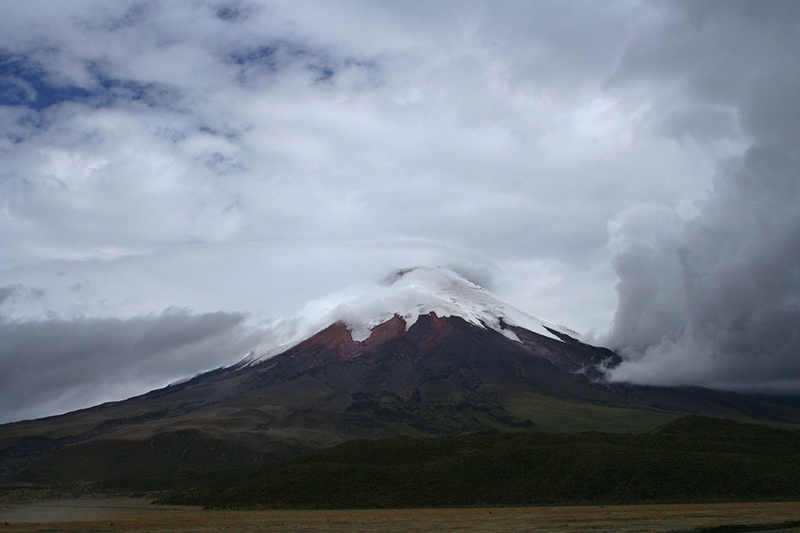 Thus we set off for Cotopaxi, a volcano that is the second most visited site in Ecuador after the Galapagos Islands. After an early start we drove on to the Pan American Highway. It is not a highway at all; just a road with one lane in each direction but it runs the length of South America finishing at Terra del Fuego in Argentina. It is a busy, twisty road on which drivers only try to overtake on blind corners. Our chap swore at everyone else’s poor driving using full hand gestures but still pulled out from behind a bus, engine labouring, just before a blind bend. Had something been coming the other way we would have been toast. We looked at each other but said nothing, just reached quietly for the safety belt. After the same thing had happened 5 or 6 times we had got used to it and relaxed (slightly). ‘How is my driving? Good eh?’ Yup, superb matey, and we just kept praying.
Thus we set off for Cotopaxi, a volcano that is the second most visited site in Ecuador after the Galapagos Islands. After an early start we drove on to the Pan American Highway. It is not a highway at all; just a road with one lane in each direction but it runs the length of South America finishing at Terra del Fuego in Argentina. It is a busy, twisty road on which drivers only try to overtake on blind corners. Our chap swore at everyone else’s poor driving using full hand gestures but still pulled out from behind a bus, engine labouring, just before a blind bend. Had something been coming the other way we would have been toast. We looked at each other but said nothing, just reached quietly for the safety belt. After the same thing had happened 5 or 6 times we had got used to it and relaxed (slightly). ‘How is my driving? Good eh?’ Yup, superb matey, and we just kept praying.
90 minutes later, we arrived at the national park and began climbing (in the vehicle!) up the dirt road. At 10,000 feet (about 3,000m) the trees vanished, at 12,000 feet (about 3,700m) pretty much everything else stopped growing and the mountain desert begins. Chasqui, made us get out and walk for 10 minutes at 13,000 feet. He said this was to help acclimatise but I reckon he wanted to see what he was dealing with and whether we were capable of trekking up to the refuge. We walked at a brisk pace and chatted away innocently and Chasqui looked pleased that he wouldn’t have to keep us in the car. He certainly has an infectious enthusiasm for the mountains and for Cotopaxi in particular. Given the chance he would spend every day climbing, it is his passion and his life.
When we got out of the car at 14,000 feet, the first thing that hit us was the relentless wind. Coming at us sideways with sufficient force that I had to lean my 95kg body into its teeth. We were covered from head to foot in clothing. We both had 4 layers on our bodies including the all weather proof jackets, but it still felt cold.
Of course, we galloped off far too quickly and ground to a halt after 100m struggling to breathe. Chasqui thought this highly amusing but, as we were not capable of speaking, all we could do was wave our arms and hands in pathetic fashion. We plodded on up the slope that is made up of volcanic dust. With every step forward your foot slips half a step back which is heartbreaking. The climb does not seem hard on the legs but the lungs are working at maximum capacity trying to find some oxygen. To add to the misery it started raining, and some snow, still with the wind. How we laughed!!! Except we couldn’t. When we stopped for a rest, breathing slowed to ‘normal’ pretty quickly and that was encouraging because it meant that we probably wouldn’t die after all.
 We made the Refuge at 4,800m (about 16,000 ft). Thoughts of hot chocolate, coffee and snack bars were quickly banished by Chasqui urged us on further and marched off leaving us grumbling in his footsteps. We reached the start of the glacier at 5,000m (16,600ft) and, mercifully, progress was blocked by the lack of technical equipment to climb further. Unfortunately, the views down were obscured by cloud but there was the odd gap that allowed us to see something.
We made the Refuge at 4,800m (about 16,000 ft). Thoughts of hot chocolate, coffee and snack bars were quickly banished by Chasqui urged us on further and marched off leaving us grumbling in his footsteps. We reached the start of the glacier at 5,000m (16,600ft) and, mercifully, progress was blocked by the lack of technical equipment to climb further. Unfortunately, the views down were obscured by cloud but there was the odd gap that allowed us to see something.
On the way down, we did stop at the refuge for chocolate and coffee-flavoured hot water. It was a welcome chance to warm up before the descent that was remarkably easy and pain free.
We spent the night at a town called Latacunga that had a busy market in progress. The next day, another early start to take in the ‘Quilotoa Circuit’ up to another volcano, Quilotoa. The route itself runs through local towns and some dramatic countryside – which was very dry and barren. To to do this route by bus takes 2-3 days by bus , if you can find them or wish to risk them. The land and people are poor, farm work is manual and the crop they grow are then taken down to market to trade for other produce including animals. Their homes are single rooms where the whole family live and eat, cooking from a single fire stove, the roof made from grasses, the walls from mud and stone
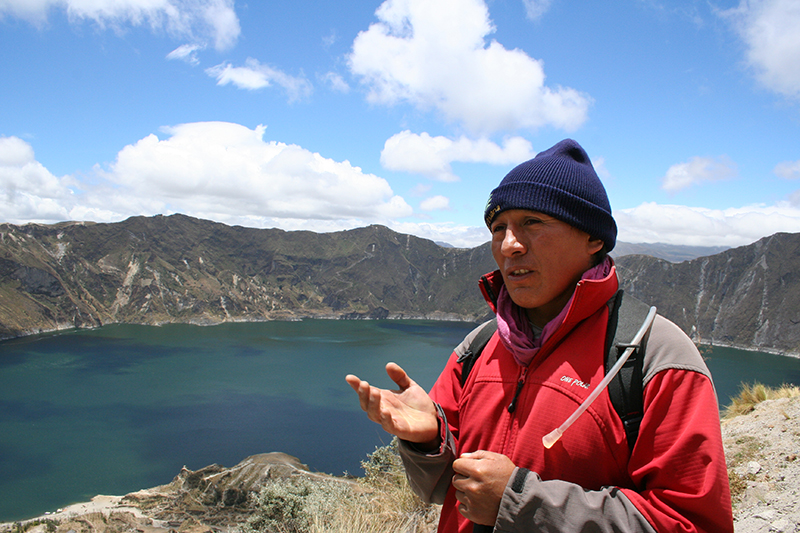 The highlight of the road trip is the volcano, Quilotoa, that last erupted in 1796 and now has a lake in its crater, although Chasqui said that the volcano itself was still active.
The highlight of the road trip is the volcano, Quilotoa, that last erupted in 1796 and now has a lake in its crater, although Chasqui said that the volcano itself was still active.
The rim was only 3,800m and the lake 3,500m. We walked down to the lake via a small goat trail off the main tourist route. It is narrow and hard work. You cannot trust that the stone you place a foot on is not loose leading to an alarming slip toward the edge of the precipice. It still took an hour to negotiate the path to the cold waters of the lake where Chasqui announced a 5 minute break; we managed to eke it out to nearer 15 by throwing our clothing and equipment around the place and being generally useless. The lake is very large and green. The wind flattens parts of it and whips up white horses elsewhere. The water is not drinkable being full of whatever Middle-earth coughs upwards.
We then walked across to the tourist trail for the ascent to the rim. Once again, the lungs were at full capacity and the path was even steeper than the day before. I eventually found a way not to slip backwards constantly. One foot planted only one boot length in front of the other and one deep breath in on the left foot, one breath out on the right. It was hard work not made easier when Chasqui started singing. Bastard. Two hours later we reached the top but only after our guide played a jolly jape telling us we were finished when we still had another 10 minutes to go.
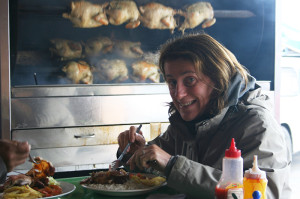 We then repaired for a late luncheon in a town called Pujili where Debbie, desperately hungry, ate chicken!! She didn’t look too happy about it but it was chicken or starve.
We then repaired for a late luncheon in a town called Pujili where Debbie, desperately hungry, ate chicken!! She didn’t look too happy about it but it was chicken or starve.
After a long day, hard hike and 100km around the country we spent that night back in Quito. There is a restaurant under the hostal that serves adequate food and we can dine for $15 including beer and wine.
From time to time a local turns up to sing. He arrives by bicycle with his guitar strapped across his back with string. He always wears a cowboy hat, a leather jacket that has seen better days, dirty jeans and boots. He plunks away for a few minutes as he attempts to tune his instrument and then begins.
He starts with a few words that I imagine are ‘Hello Quito! It is so good to be back here again. Boy, I love this place and I love you all. I would like to begin with my hit single that made it to number 98 in the Ecuadorian charts.’ Then he begins. His guitar playing is rubbish and his singing dips in and out of tune randomly and his performance is punctuated by stops as he forgets the words. No conversation is possible while he gives his masterclass in noise but his repertoire is mercifully short and he runs out of steam after 3 ‘songs’. Give him his due; he then has the brass to ask for money! It’s a pleasure to bung him 50 cents to go away.
Another early start on Saturday to travel north into the lush, green and more ‘alpine’ feel of Ecuador to visit the meridian line and experience the trading of produce at the market at Otavalo. As we are early, we are the only ones at the line of the Equator so we play tourist and take loads of photos straddling North and South.
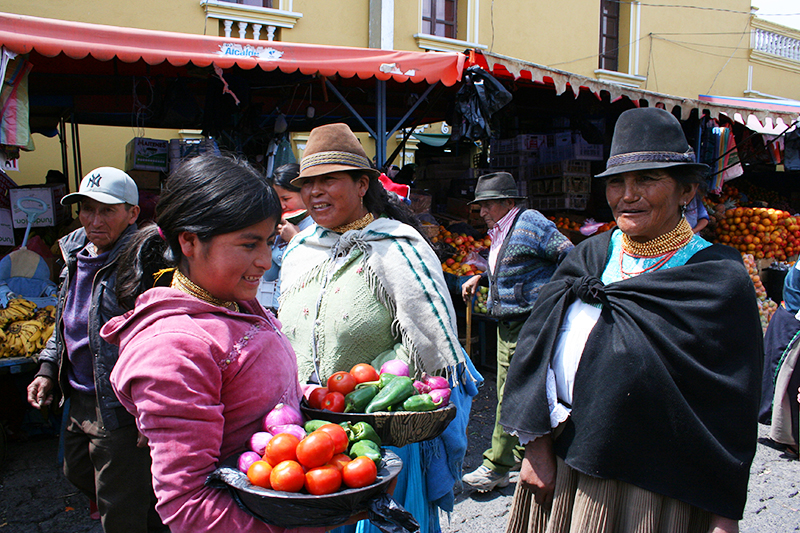 The market at Otavalo is enormous and very busy. Comprising of 4 different markets around the centre of the town traders and weavers come in from dozens of indigenous communities We arrive at 10.00 but it has been going since 6.00am. The animal market has everything edible that Equador has to offer: Cows, bullocks, sheep, chicken, pig, dogs and guinea pig. Guinea pig is a speciality here and you can buy one for $10 but you have to kill and gut it yourself. Or you can go to a restaurant.
The market at Otavalo is enormous and very busy. Comprising of 4 different markets around the centre of the town traders and weavers come in from dozens of indigenous communities We arrive at 10.00 but it has been going since 6.00am. The animal market has everything edible that Equador has to offer: Cows, bullocks, sheep, chicken, pig, dogs and guinea pig. Guinea pig is a speciality here and you can buy one for $10 but you have to kill and gut it yourself. Or you can go to a restaurant.
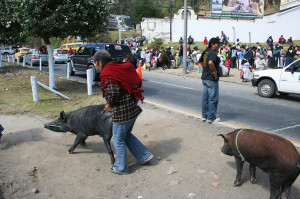 There are sheep and pigs being dragged complaining to cars and trucks. Sheep have their front and back legs tied together and are then bundled into the boots of cars still protesting loudly. Pigs are manhandled into trucks: it takes 3 men to lift each beast. Sacks that are jumping about are full of chicken that get thrown into any available space. The market, having been going 4 hours, only has the poor cattle left for sale. They look miserable emaciated animals that need several decent meals and a bit of tlc.
There are sheep and pigs being dragged complaining to cars and trucks. Sheep have their front and back legs tied together and are then bundled into the boots of cars still protesting loudly. Pigs are manhandled into trucks: it takes 3 men to lift each beast. Sacks that are jumping about are full of chicken that get thrown into any available space. The market, having been going 4 hours, only has the poor cattle left for sale. They look miserable emaciated animals that need several decent meals and a bit of tlc.
The rest of the Saturday market, the clothing, food, paintings and tourist paraphernalia is elsewhere. This is organised chaos, busy, loud but full of energy, colour, national dress and friendly people. We have fun walking around, watching and photographing earnest people bartering for the products on offer.
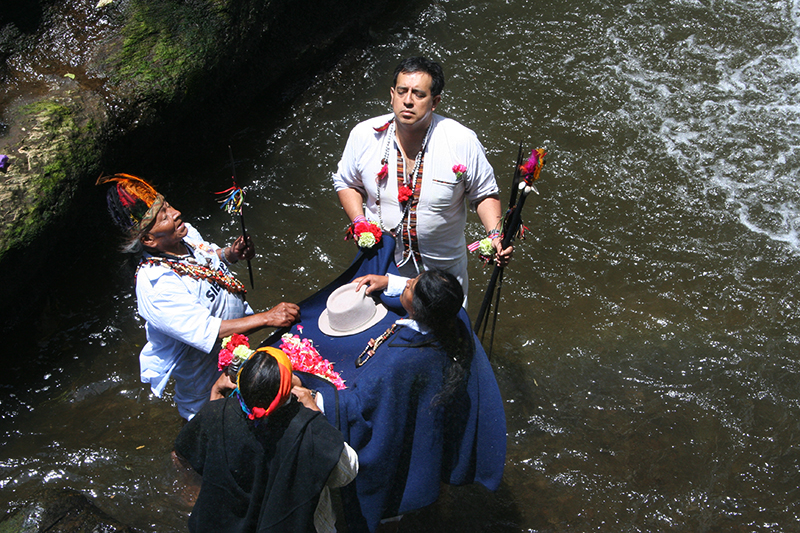 Finally we go off to visit a waterfall, the Cascada de Peguche, that is nearby. Set in the middle of a Eucalyptus forest its tranquillity makes a wonderful contrast to the bustle of the market. Bizarrely there was a ‘cleansing ceremony’ underway at the foot of the waterfalls. Some politico is there having his negative energy exorcised from his body. This involves being dressed in white, standing in the freezing river whilst a ‘priest’ wearing an open white shirt with a Germany football top underneath, spits liquid at him, rubs him with eggs and greenery and speaks some mumbo jumbo to the god of the waterfall. This goes on for hours. We stayed for some while because Chasqui assured us that the poor chump would be pushed under the waterfall but we got bored so we left.
Finally we go off to visit a waterfall, the Cascada de Peguche, that is nearby. Set in the middle of a Eucalyptus forest its tranquillity makes a wonderful contrast to the bustle of the market. Bizarrely there was a ‘cleansing ceremony’ underway at the foot of the waterfalls. Some politico is there having his negative energy exorcised from his body. This involves being dressed in white, standing in the freezing river whilst a ‘priest’ wearing an open white shirt with a Germany football top underneath, spits liquid at him, rubs him with eggs and greenery and speaks some mumbo jumbo to the god of the waterfall. This goes on for hours. We stayed for some while because Chasqui assured us that the poor chump would be pushed under the waterfall but we got bored so we left.
So, another week has passed very quickly. It has been surprising how little money is required to survive in Ecuador but after the extravagance of the USA it feels good to stop bleeding cash. After 3 days of speaking Spanish we were exhausted, and finally run out of Spanish vocabulary! Still we managed and survived. The altitude is a constant struggle. Walking on level ground is no problem and you feel quite normal but any sort of slope or stairs and the lungs begin heaving. I suppose it’s good practice for old age!


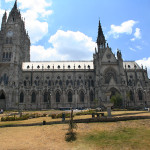
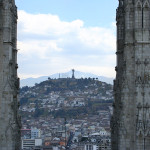
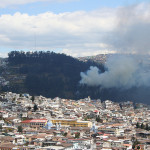

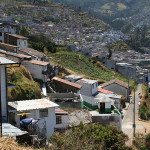
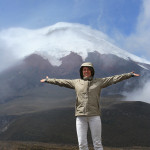
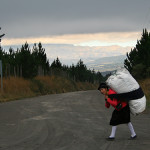
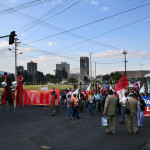
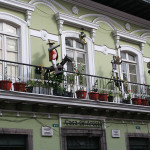
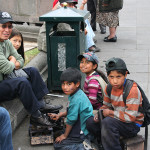

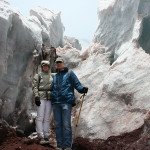
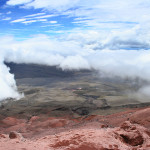
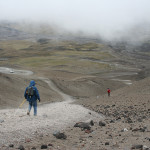
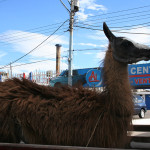
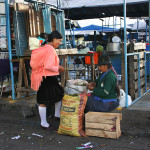
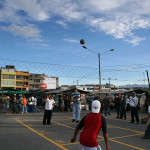
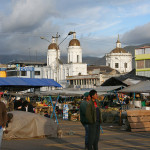
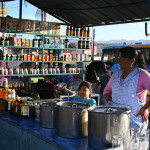
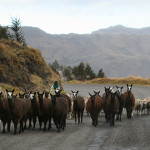
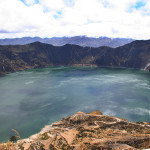
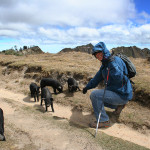
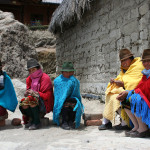
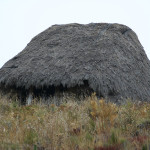
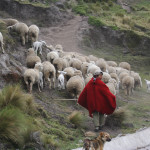
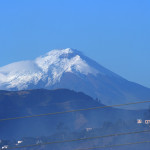


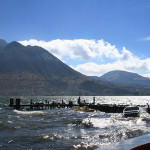
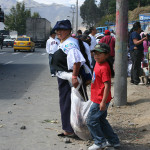
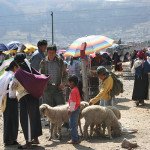
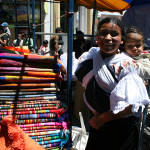
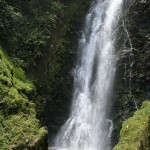
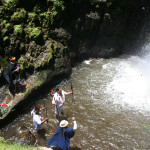
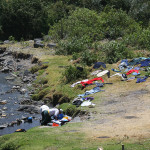
No comments yet.